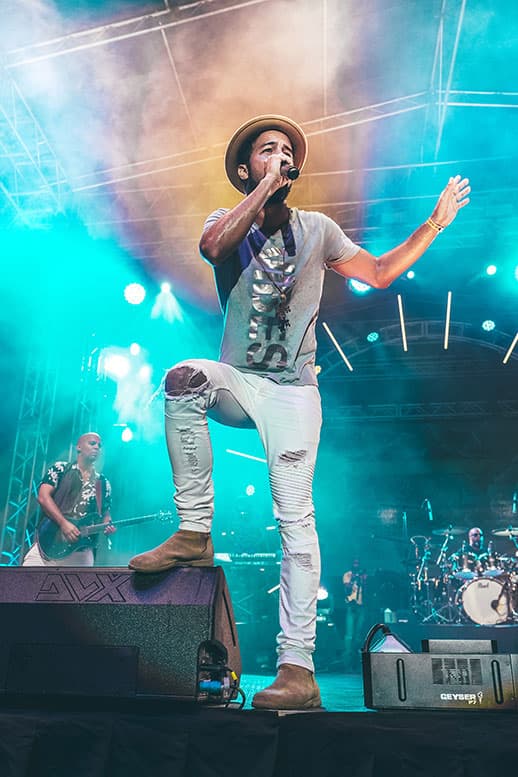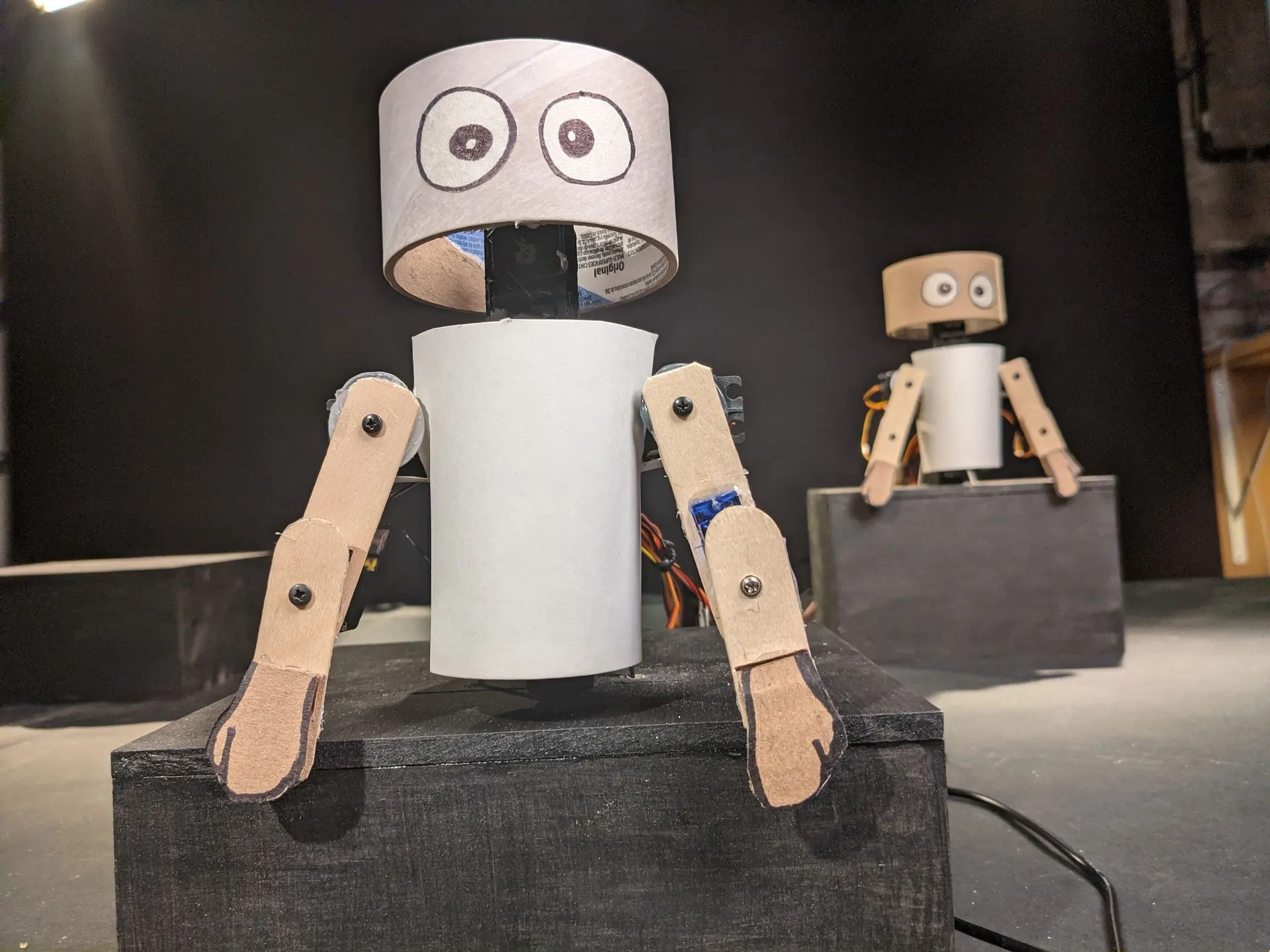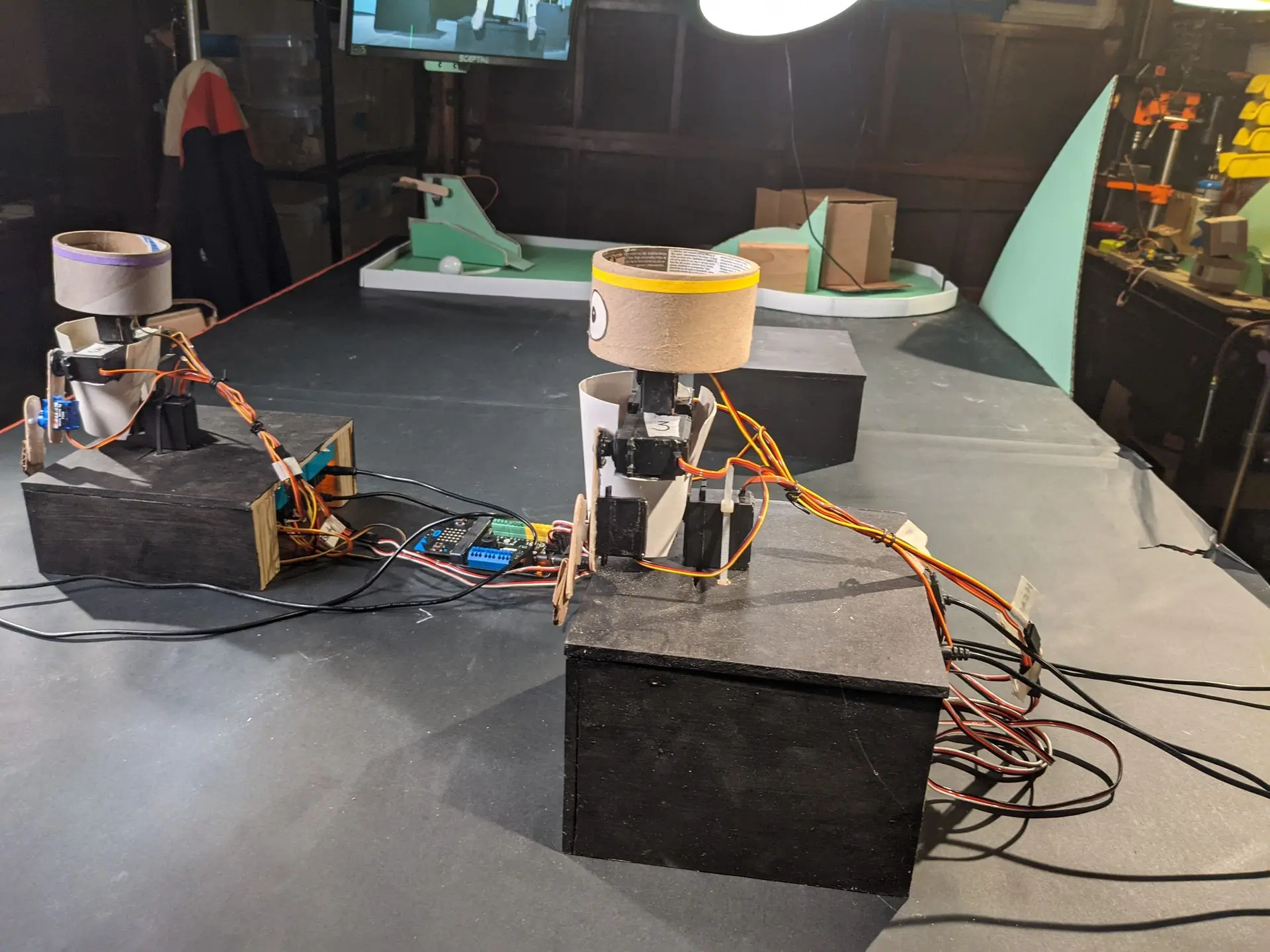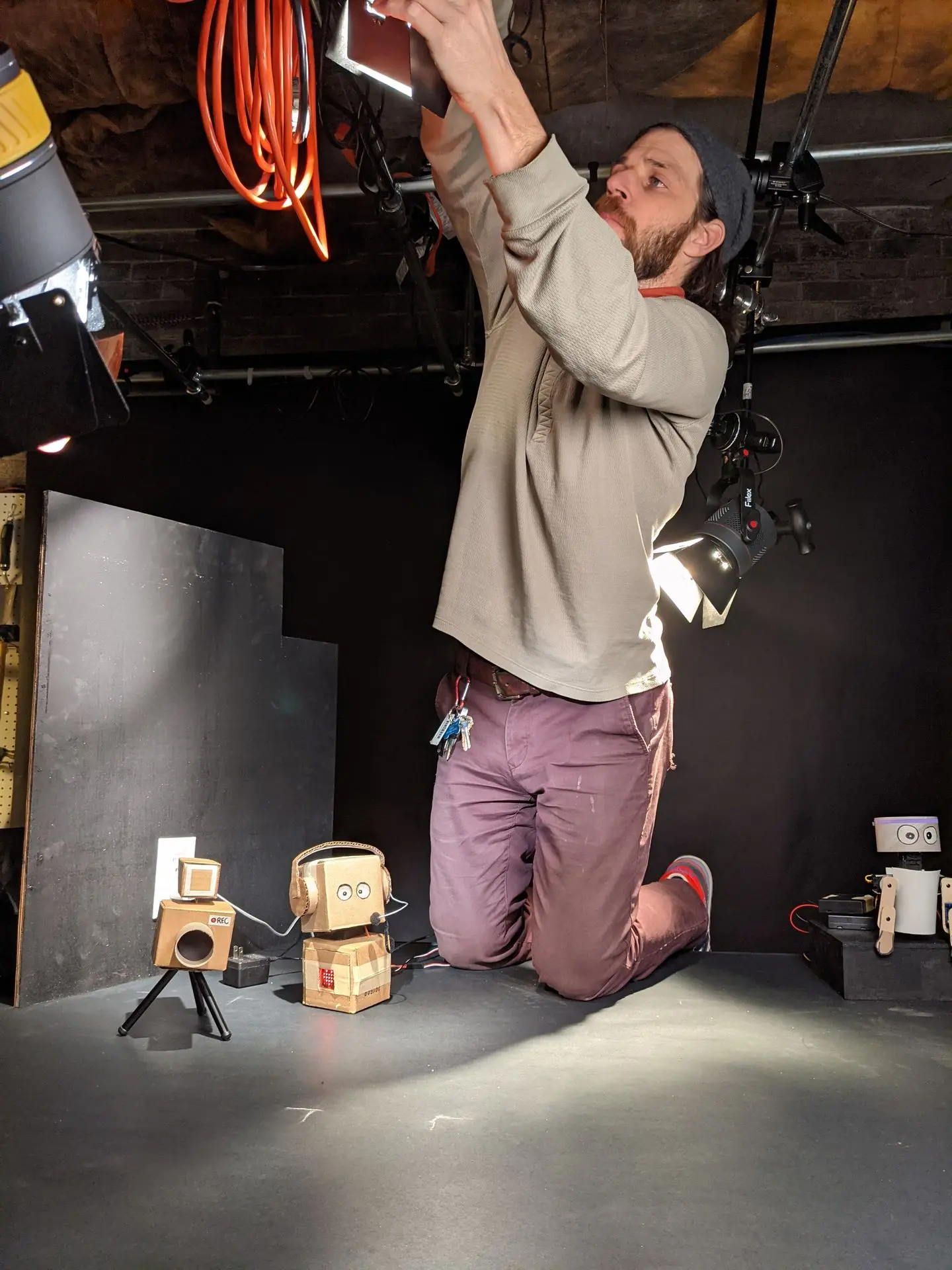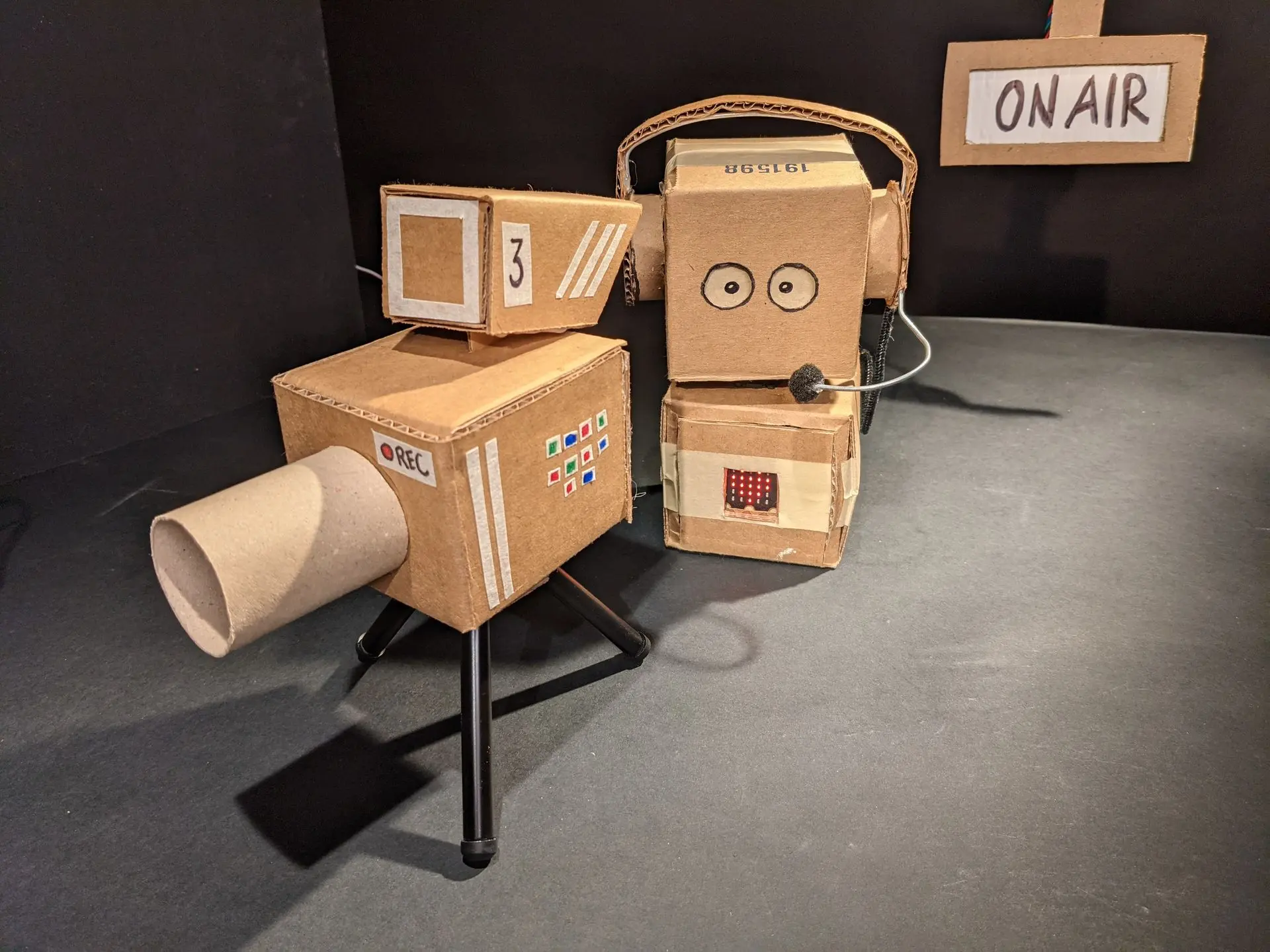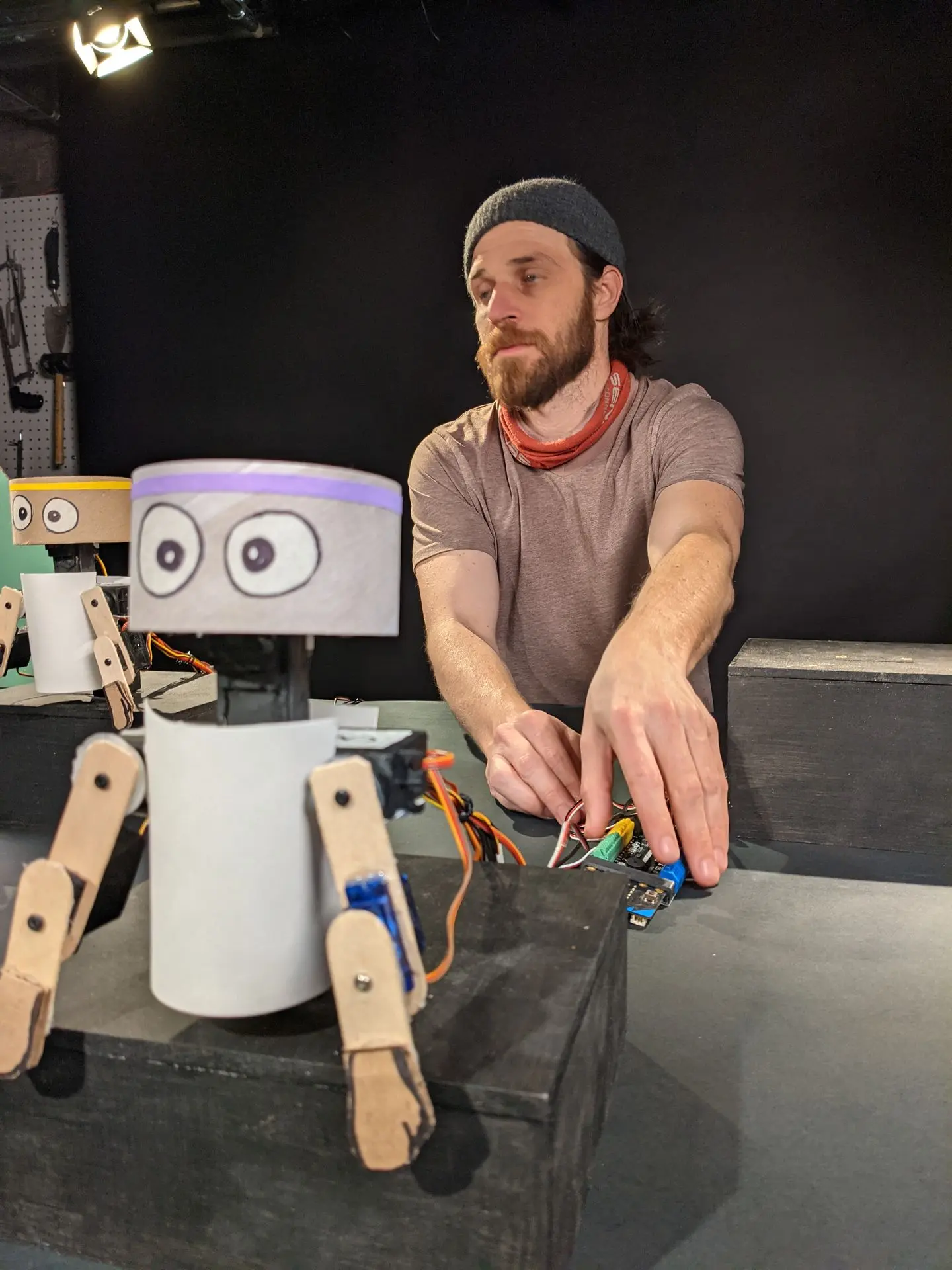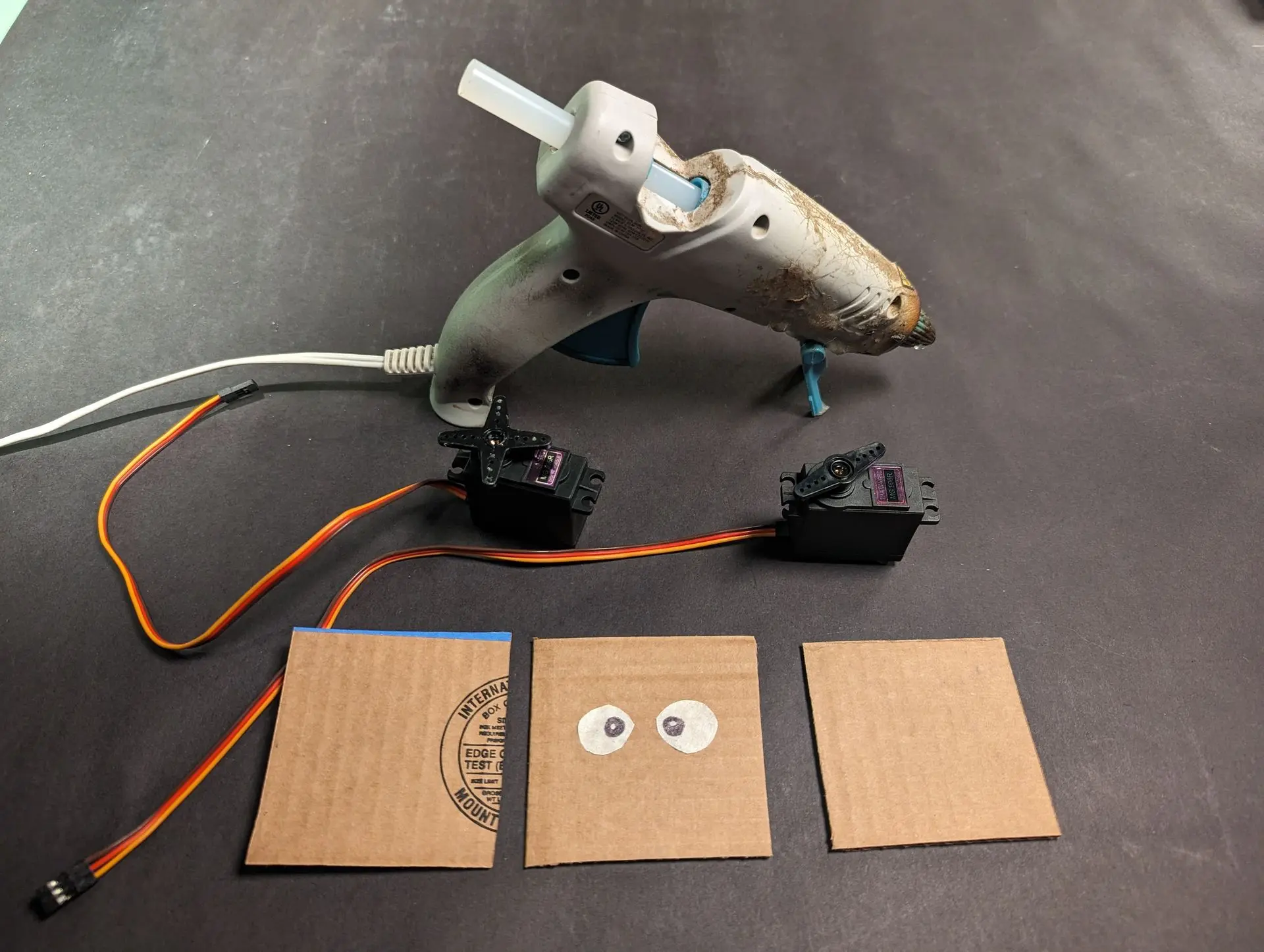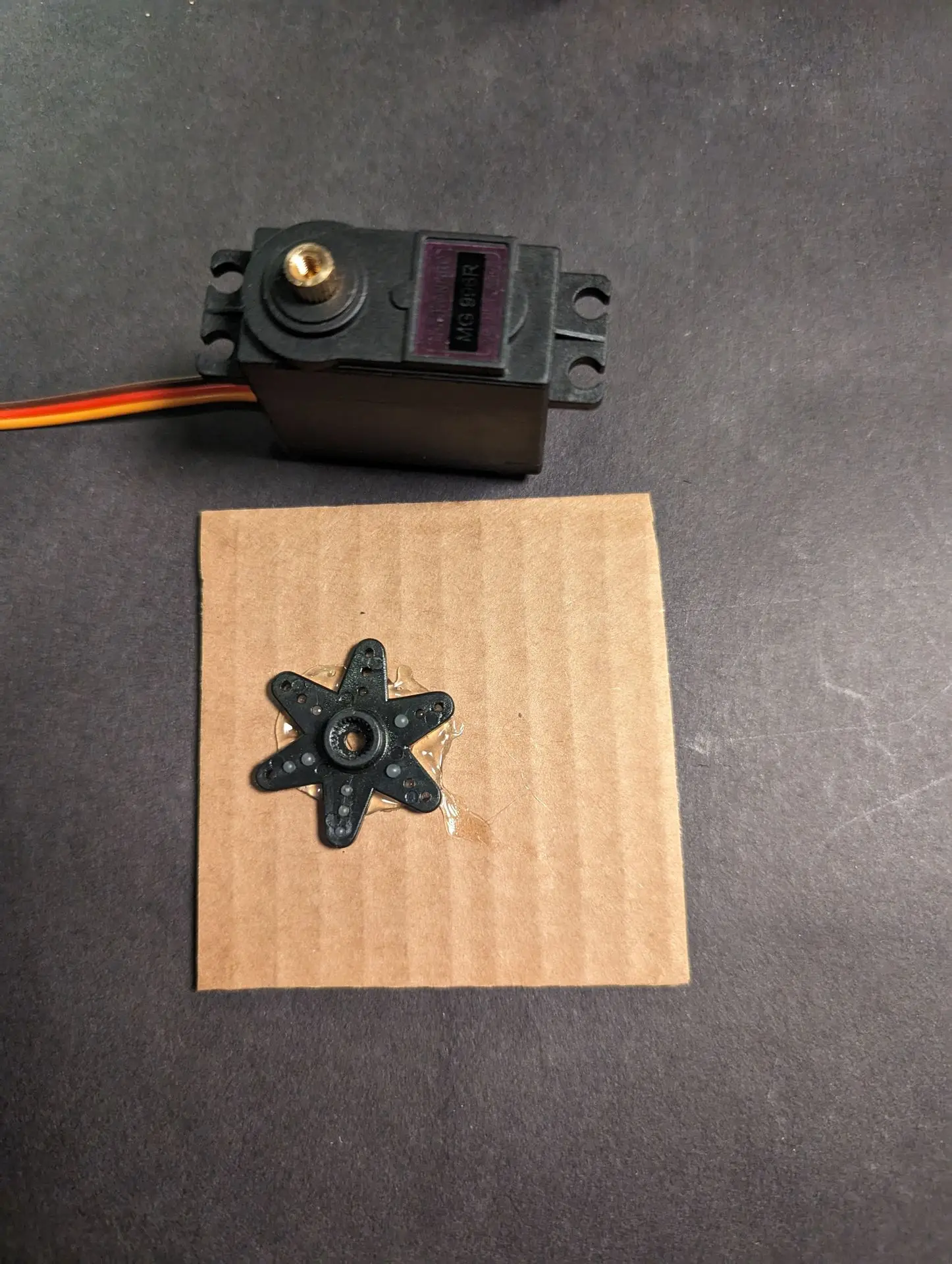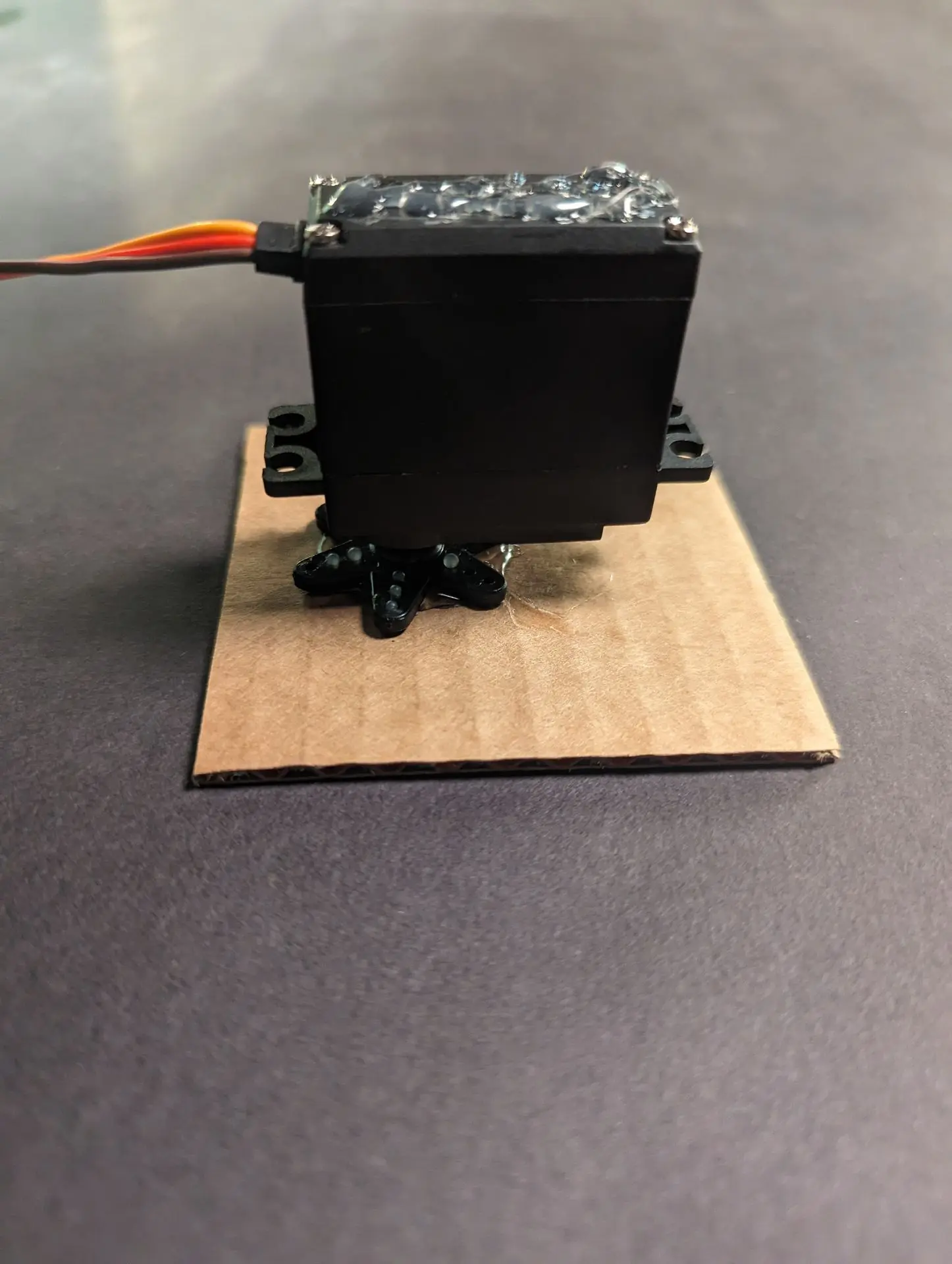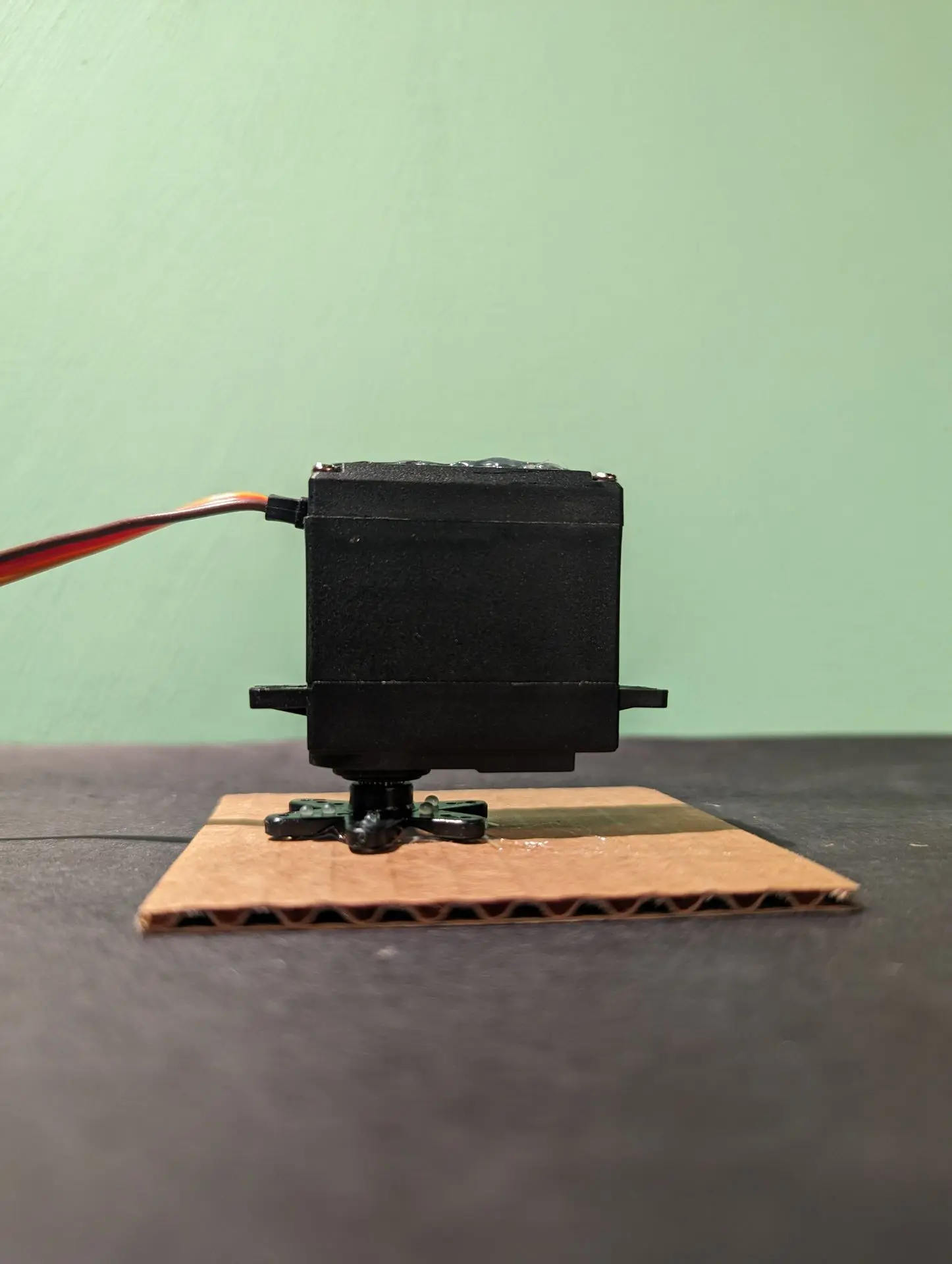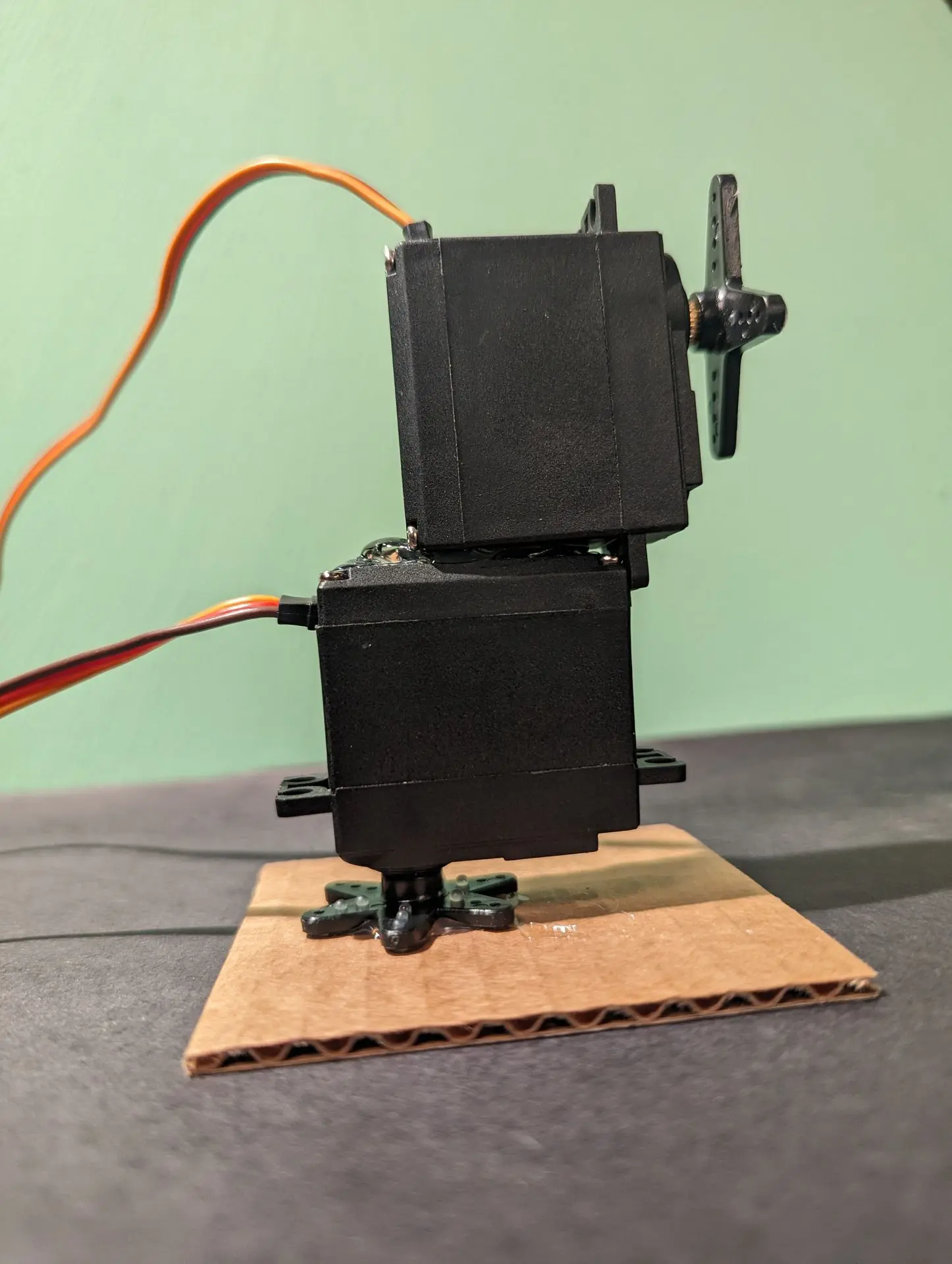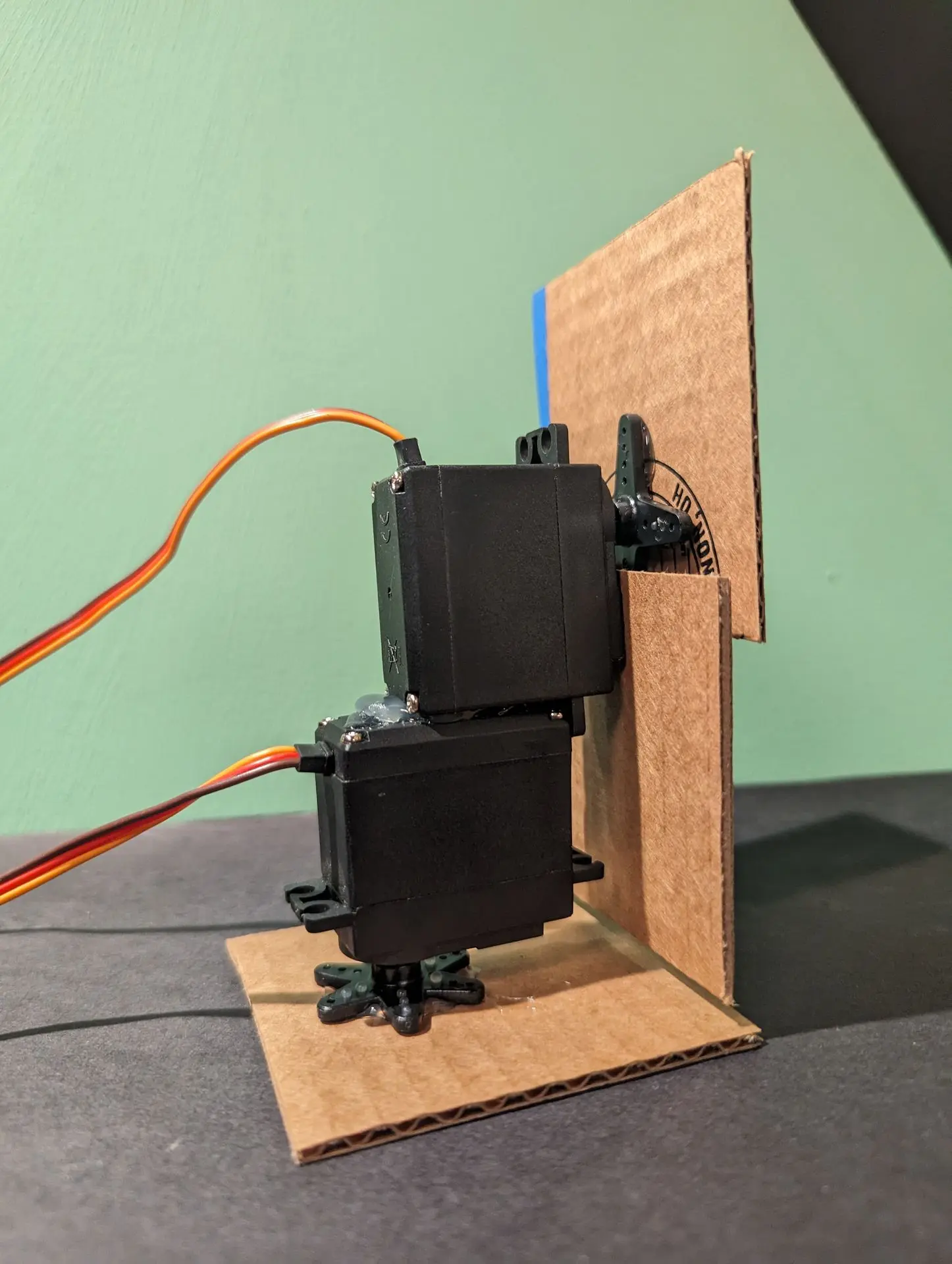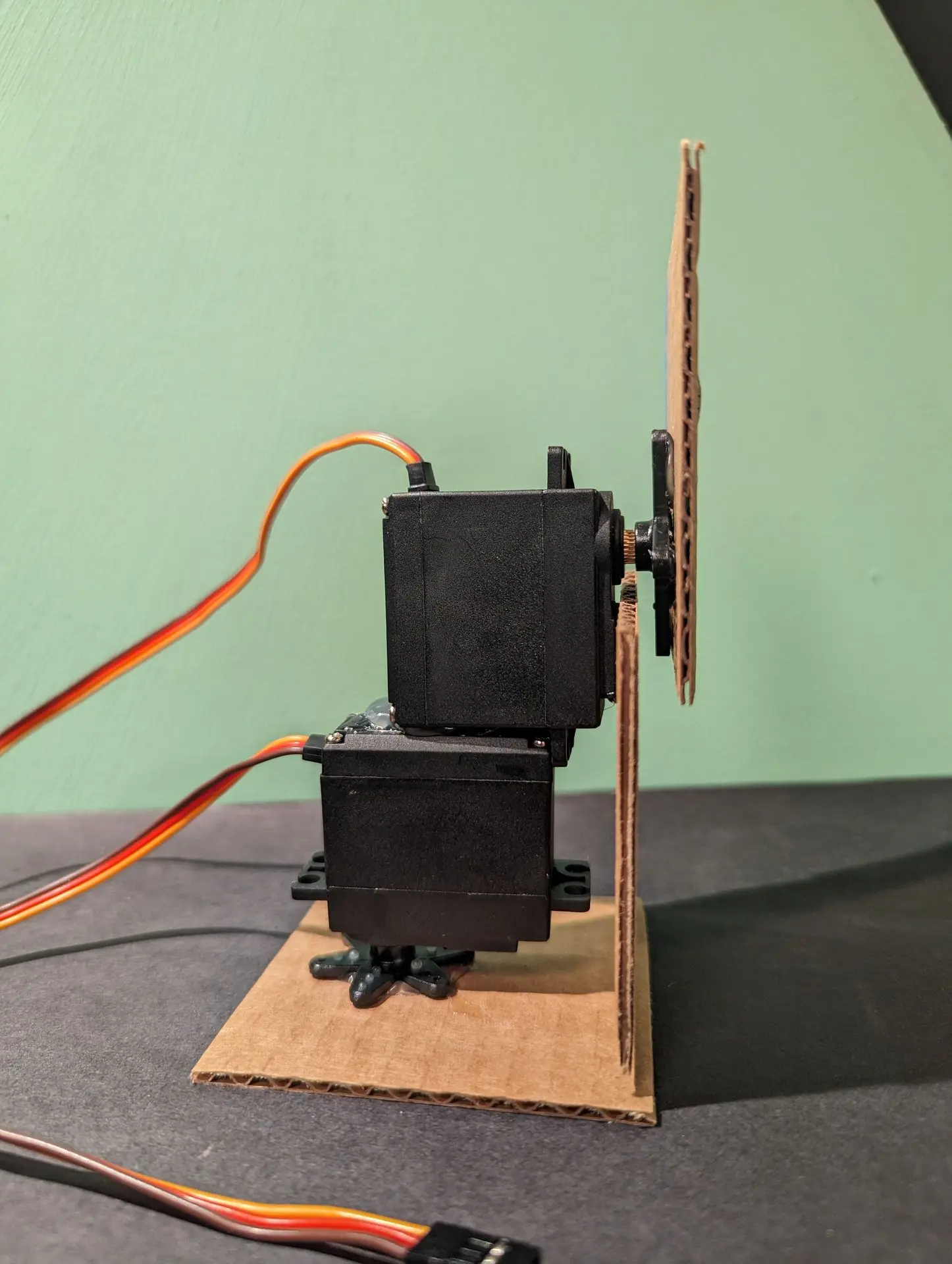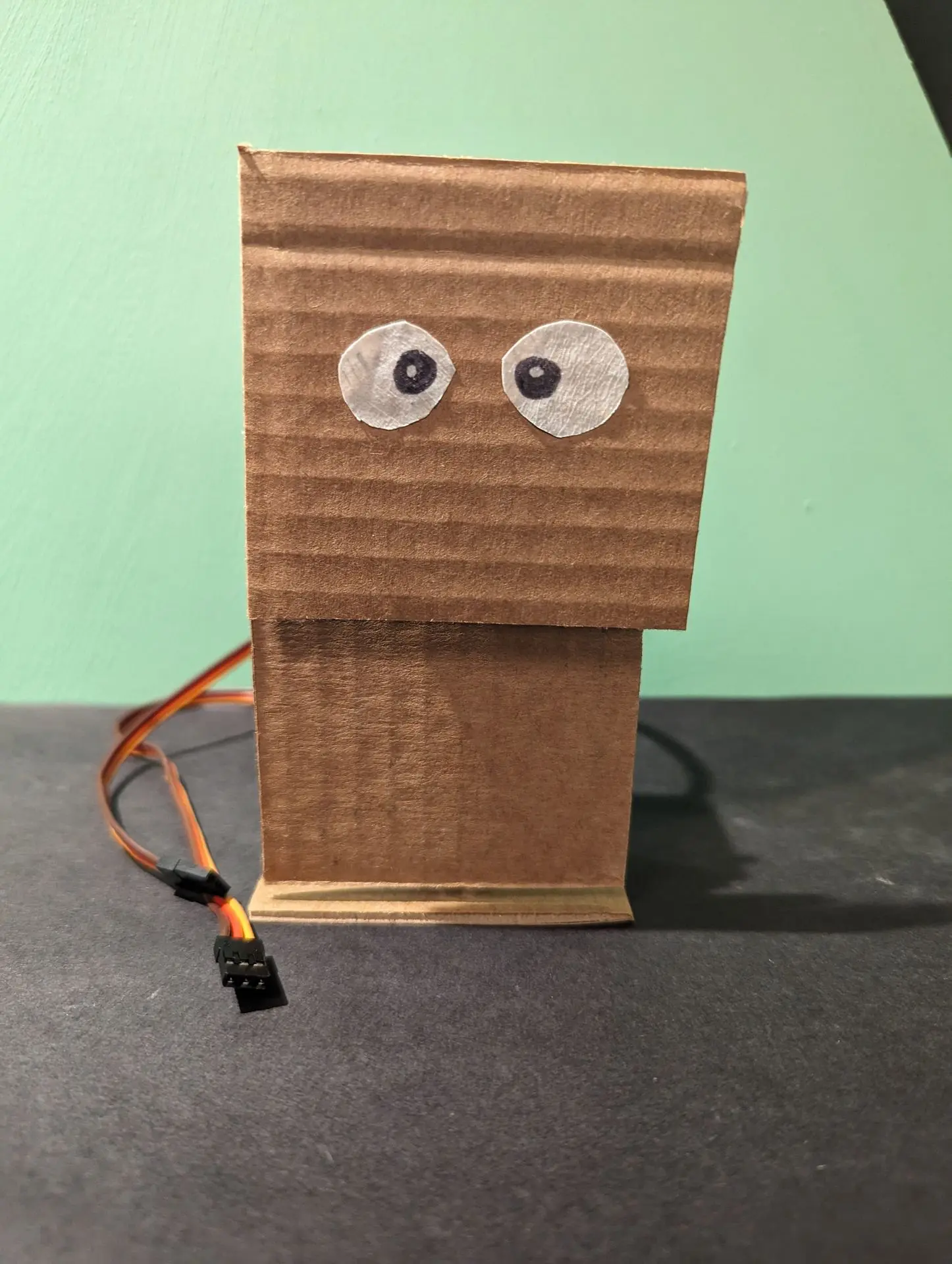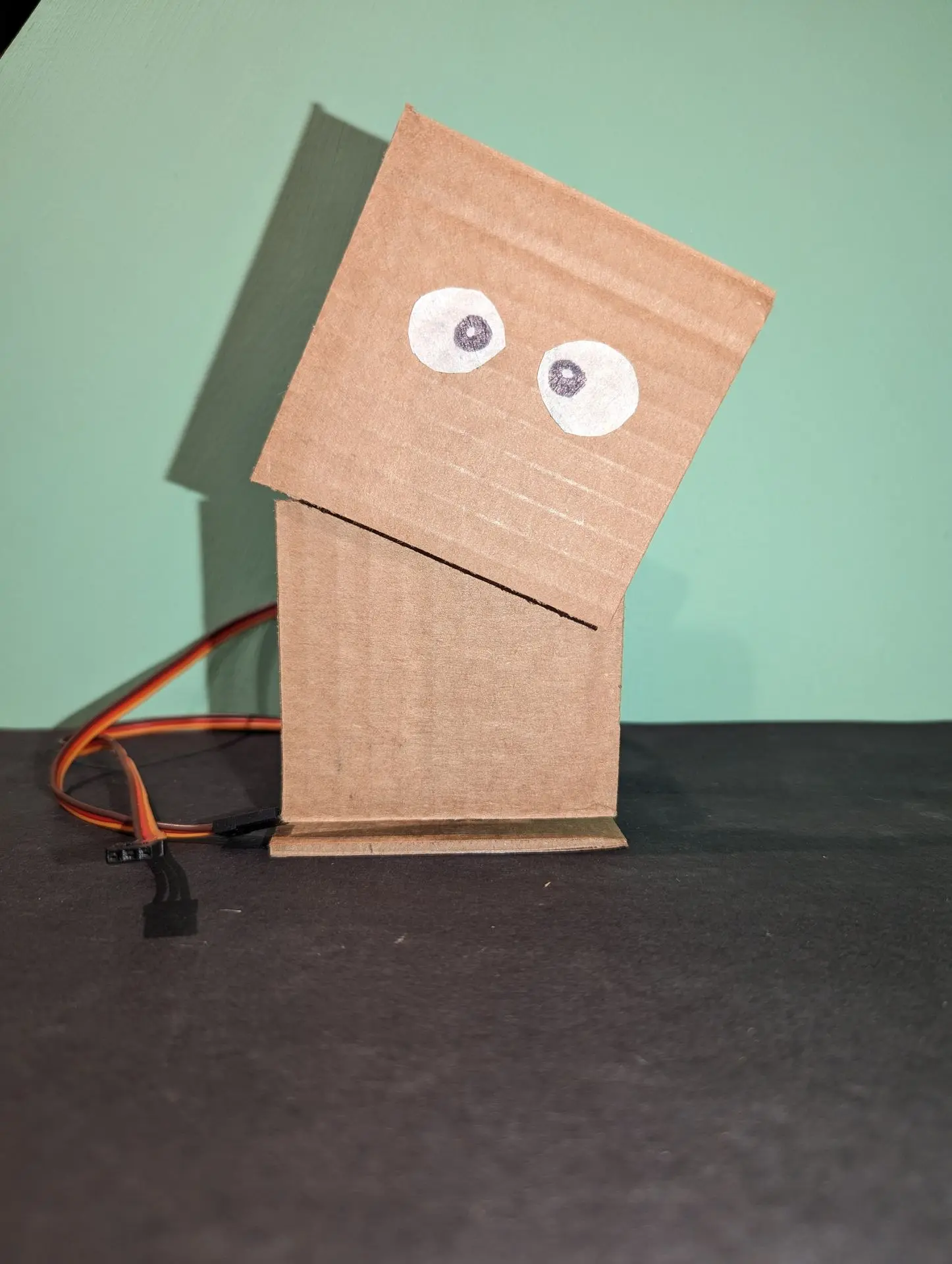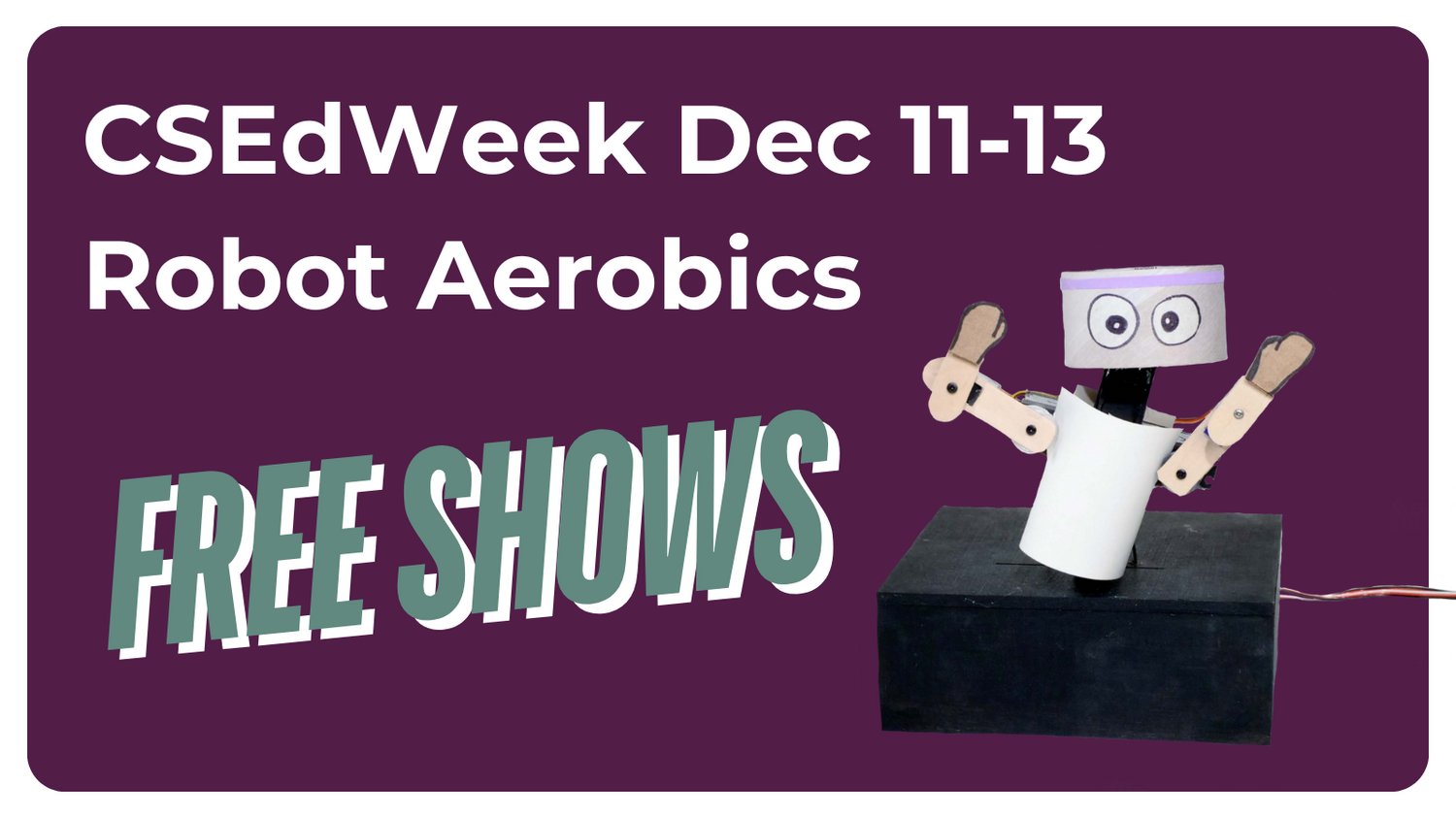Get ready to groove into the world of coding with Robot Aerobics! This interactive show brings the energy of 80s fitness videos to your classroom, combining the nostalgia of Jane Fonda and Richard Simmons with cutting-edge robotics. Imagine your students programming robotic dancers and even controlling their teacher in a hilarious, high-energy coding adventure. It's not just about sitting in front of a computer – Robot Aerobics gets kids moving, laughing, and learning all at once. So put on your coding sweatbands and prepare to lead your class through a workout that exercises both body and mind. Join Amanda Jeane, Kelsey, and Matt for a conversation about the Robot Aerobics Student Show.
Amanda Jeane Strode (AJ): What is Robot Aerobics?
Matt Chilbert (MC): Robot Aerobics is one of our favorite interactive shows. The story is that of a live aerobics show in the vein of Richard Simmons and Jane Fonda. The kids learn to program motors and then the motors control the arms of some robot dancers.
Kelsey Derringer (KD): In the middle of the show, something happens to one of the robots and I have to take over for the dancer. And the kids control not only the dancing robots, but also me, their teacher, and hilarity ensues. I have to do my best to keep up with their programs even if it's not physically possible for a human to do them.

AJ: Where did the idea for Robot Aerobics come from?
KD: As far as subject matter, we were really inspired by folks like Jane Fonda, Suzanne Summers, Richard Simmons, who host aerobics programs encouraging people to get up and move. So, the songs and the words and even the names of the characters are all very much inspired by that era. That era was a form of interactive television I suppose, and our robots are even named Jane, Richard, and Suzanne. The kids don't get that joke. The teachers sometimes do. I actually spent some time one winter, while we were working on this show, doing the Jane Fonda workouts and dang, they're hard. It's a good workout.
MC: So originally, the idea I really wanted to get off the ground was for the students to control the robots' feet. For Kelsey, because she's so much larger than the robots, you wouldn't actually see her body. You just see her feet trying to move along with whatever it is that the kids were coding. But, those robots proved to be too difficult to build. We had a bunch of complicated systems planned out, none of which fully came to fruition. In my imagination, there were two primary shots in this that I wanted to capture. One was the robots with their moving feet and then Kelsey's giant feet behind them trying to keep up. Then cutting to Kelsey's torso which would be the other shot and just her panicked face trying to keep up. I thought that would allow for some really fun comedic moments, and this was all partially inspired by a Muppet Show segment where Kermit the Frog tap dances.
AJ: AH! I can see the resemblance. This show also makes me think of the Gif of Kermit flailing his arms around. The way the robot arms move and the way Kelsey flails around reminds me of the Muppets.
KD: There was another inspiration behind this too! Especially in the early days of designing, in the interactive nature of the CodeJoy shows, we thought, “Wouldn't it be cool if the kids could control not only the robots but the teacher?” Part of the design behind this show as well is that they control the robots and they're controlling a human; which is sort of like a proof of life. We get to show students that their code is doing something real, this is not an animation.
AJ: Is there more to the inspiration for this show? Many of our other shows have inspirations like dark rides or special personal memories. What is the nostalgic or personal connection to Robot Aerobics?
MC: I have a strong connection to the 80s since I was born in 1980. I really did grow up with these aerobics fitness videos. They just sort of existed on my parents' bookshelves and every friend, and every aunt, and every uncle, had Jane Fonda or some version of these videos. Growing up, there were a lot of kid knockoffs of these videos, too. There was one called Mousercise on Disney Channel, where Mickey would do an exercise dance and we're expected to sort of dance along with them. So, as Kelsey was saying, this was an early form of interactive video. You're expected to get up and move with them. And when thinking about coding, many people think of it as such a stationary, boring thing that happens in a dark room. What if we tried to make the activity of coding more exciting, more active? That was a goal with Robot Aerobics, and that's a goal for all CodeJoy shows. How can we get kids active while they're coding?
videos. Growing up, there were a lot of kid knockoffs of these videos, too. There was one called Mousercise on Disney Channel, where Mickey would do an exercise dance and we're expected to sort of dance along with them. So, as Kelsey was saying, this was an early form of interactive video. You're expected to get up and move with them. And when thinking about coding, many people think of it as such a stationary, boring thing that happens in a dark room. What if we tried to make the activity of coding more exciting, more active? That was a goal with Robot Aerobics, and that's a goal for all CodeJoy shows. How can we get kids active while they're coding?
KD: When it comes to the dancing element of Robot Aerobics, I share in the show that I used to be a dancer. I was a very serious dancer from the age of three all the way up into my 20s. I had a really bad back injury and can't dance like I used to. That was a fun element, and also an inspiration for us. Here at CodeJoy, we look to people in the entertainment industry who have values that we respect and align with as well. Jane Fonda is a particularly inspiring figure, to both Matt and I. She was an actress, but she created an aerobics craze. And, for some people, that was a very strange decision! Her acting career, her aerobics video, all of this is an effort for her to fuel her activism. She has been a lifelong activist for a number of causes including anti-war causes and things like that. We say these names in the show, and kids don't know who they are. However, if they happen to learn about these people, these are people whose values very much align with our own here at CodeJoy.
She was an actress, but she created an aerobics craze. And, for some people, that was a very strange decision! Her acting career, her aerobics video, all of this is an effort for her to fuel her activism. She has been a lifelong activist for a number of causes including anti-war causes and things like that. We say these names in the show, and kids don't know who they are. However, if they happen to learn about these people, these are people whose values very much align with our own here at CodeJoy.
AJ: I'm very curious about the dancing robots themselves because they're so different from other robots that we have at CodeJoy. Most of our other robots don't have any appendages. Can you tell me more about the Aerobics Robots, Jane, Richard and Suzanne?
MC: We spent a long time trying to come up with a design for these characters. It was tough to create a character that has appendages with such a wide range of movement that still fits with our aesthetic. Our design principles are that every item that you're looking for should be something familiar. It has to be something that's available in a classroom. So, if you look at these robots, they're tape rolls for the heads, cut up paper cups for the bodies, and popsicle sticks for the arms. Even now, looking at them, that seems like the obvious design. It's like, yes, this fits perfectly, but these were our hardest characters to design by far. I'd say we went through five different designs before we before we landed on these. I think it's when we decided that the heads were going to be tape rolls that the rest of the body just sort of fell into place.

KD: They are also some of the most difficult robots to maintain because each robot has six servos, and is controlled by three different Hummingbird Robotics Kits. The left arm and the right arm can move independently and the bodies can also move independently. The head and the body kind of sway back and forth. Originally, we were burning through micro servos weekly! It'd be midway through the show and suddenly Richard's elbow would start to smoke visibly on camera. In between the shows, Matt was frantically grabbing the heat gun to melt the hot glue, take that micro servo out, and put a new micro servo in. Sometimes we would only have 15 minutes between shows to fix stuff. When we switched to metal gear micro servos, now they last a little bit longer. One of our design constraints is that we have to reassure the kids the code that they write isn't going to break the robots.
AJ: Is there anything else that is special about this show?
MC: Something that I love about this show personally is that it's very easy to set up. Some of our shows are extremely complicated. Robot Haunted House, for instance, will take a full day to set up and light. Robot Aerobics has this background with just two geometric shapes, a sort of slash going off to one side and a triangle on the other side. I really like that it's minimalist. I think it works with our aesthetic. Yet I think you look at those shapes and it fits with the inspiration nicely. It does look like one of those old workout videos or the 80’s Olympics with these bizarre neon colored backgrounds.
KD: One other element of the inspiration for the show, that I wanted to mention, is that we also try to design shows for kids who perhaps haven't yet been fully engaged by coding and robotics. They weren't engaged by battlebots or they weren't engaged by robot competitions of some kind. And so we think about what would appeal to everybody else who's not into that sort of thing. In 2020, TikTok really took off and there were all of these dance challenges. When I was a kid who was a dancer and that really would have appealed to me. And in fact, a lot of girls spend a lot of time in sixth grade choreographing little dances to their favorite songs. Thinking about different kinds of kids and how to appeal to them, a dance show felt very active and fun. And it also felt like a different demographic from the kinds of kids who robotics is already serving. This was designed for everybody else: a dancing robot show!
AJ: Let's talk about the lesson plan that goes along with this show: Tiny Dancer. Tell me what people can do within their classrooms? Where did it come from?
 MC: The Tiny Dancer Project uses a simple mechanism. It's something that we use a lot here at CodeJoy. This XY axis, with two servos mounted on top of one another allows for a swinging motion, like a head saying "no," and then a second servo that allows for a tilting motion, like a head saying "yes." That's the mechanism that is inside the Tiny Dancer and many of our robots. We really like the Tiny Dancer Project because it takes that mechanism to its simplest form. It allows kids to begin using this simple mechanism that has so many other applications as they move forward in robotics.
MC: The Tiny Dancer Project uses a simple mechanism. It's something that we use a lot here at CodeJoy. This XY axis, with two servos mounted on top of one another allows for a swinging motion, like a head saying "no," and then a second servo that allows for a tilting motion, like a head saying "yes." That's the mechanism that is inside the Tiny Dancer and many of our robots. We really like the Tiny Dancer Project because it takes that mechanism to its simplest form. It allows kids to begin using this simple mechanism that has so many other applications as they move forward in robotics.
KD: Some of the projects that we built prior to this, that influenced the idea, were projects that split off the evolutionary branch and eventually led to Tiny Dancer. There's a version of a dancing robot that Matt created where hips sway and swivel back and forth. There's a hula dancer version of this. Matt played ukulele and then a hula dancer would dance, but the ukulele wasn't loud enough to trigger the sound sensor. So, he also had to yell. It makes me laugh every time. We try to make the Tiny Dancer Project something that you can do in one or two class periods, with only outputs, simple code, and lots of creative choices. Which means that there needs to be lots of right answers to recreate a dance move using robotic components. There's some really hard dance moves out there. We try to help teachers narrow that down by saying, "Here's what will leave you and your students feeling very successful after one or two days of robotics and building."

AJ: One other resource I would like to add, as well, is Code.org’s Hour of Code Dance Party. We are right around the beginning of CSEdWeek. We are encouraging classrooms, teachers, students across the nation to get involved with computer science in lots of ways. Code.org’s Hour of Code is a great resource that I think goes really well with Robot Aerobics. They have more than one version and every single time it's a crowd-pleaser.
KD: We're really excited to do Robot Aerobics for our CSEdWeek classes because CSEdWeek is a call to action. It's an inspiration for K-12 students and teachers to try out computer science and to advocate for equity as well. One of the ways that we address equity is by creating experiences that appeal to a wider variety of students and teachers. Humans love dancing. We all do it. Every culture does dancing in some way. Everybody has a favorite song, everybody has a silly dance move that they break out at a wedding. And so, this is just a universal human experience. If we can tie robotics into that, that is a tool for equity, that's a tool for engagement. This is our inspiration and our call to action. What do you love? How can robotics help you do that?
Want to bring Robot Aerobics to your classroom? Check out our Robot Aerobics page to find our Featured Project: Tiny Dancer PDF and Contact Us to start the discussion!
